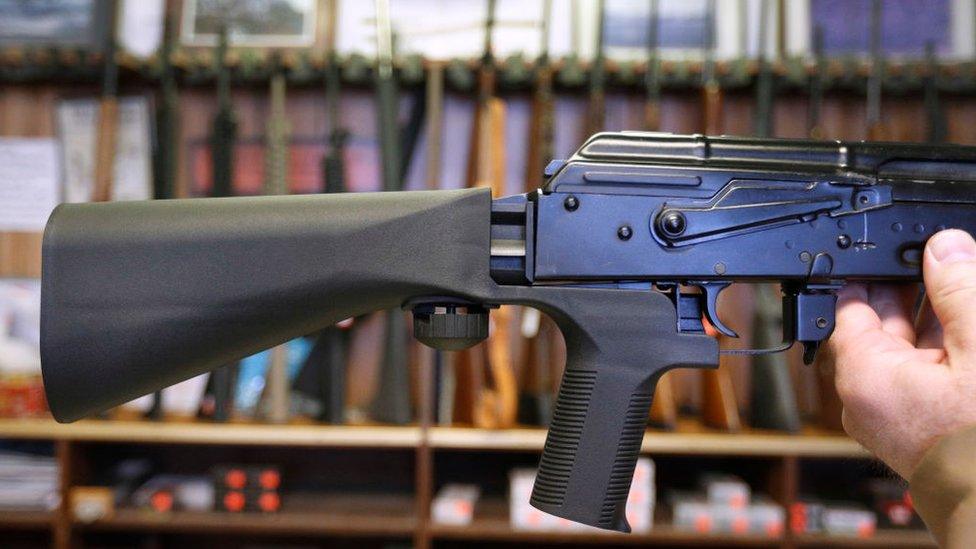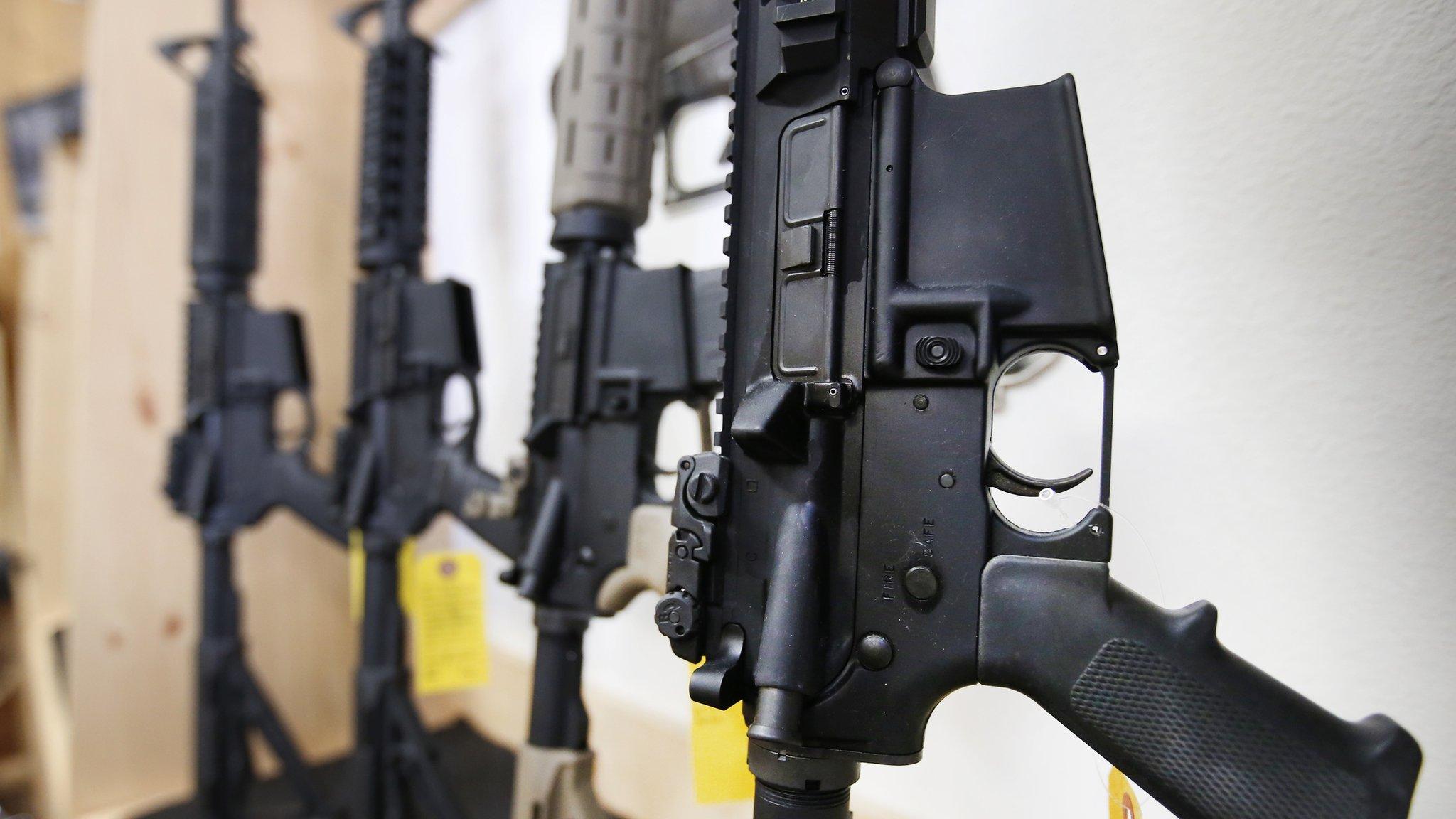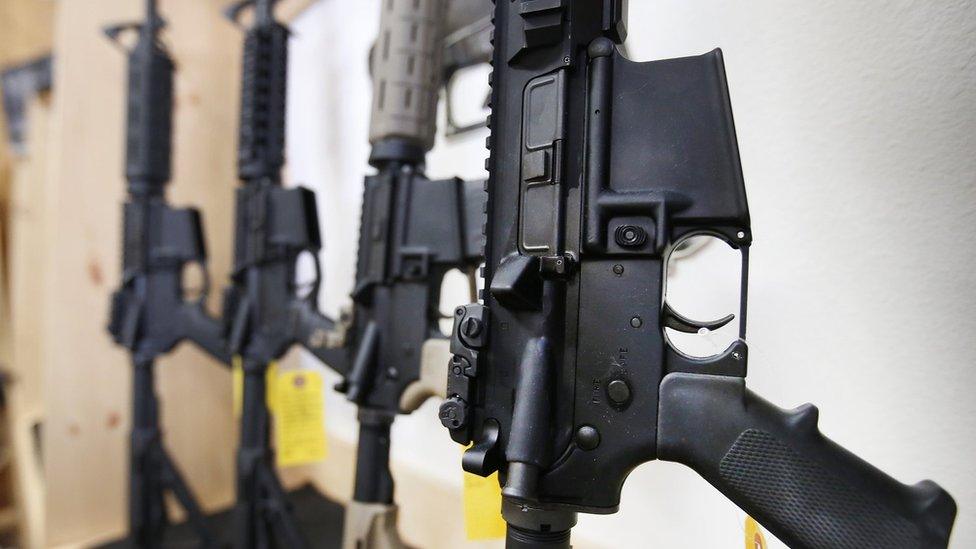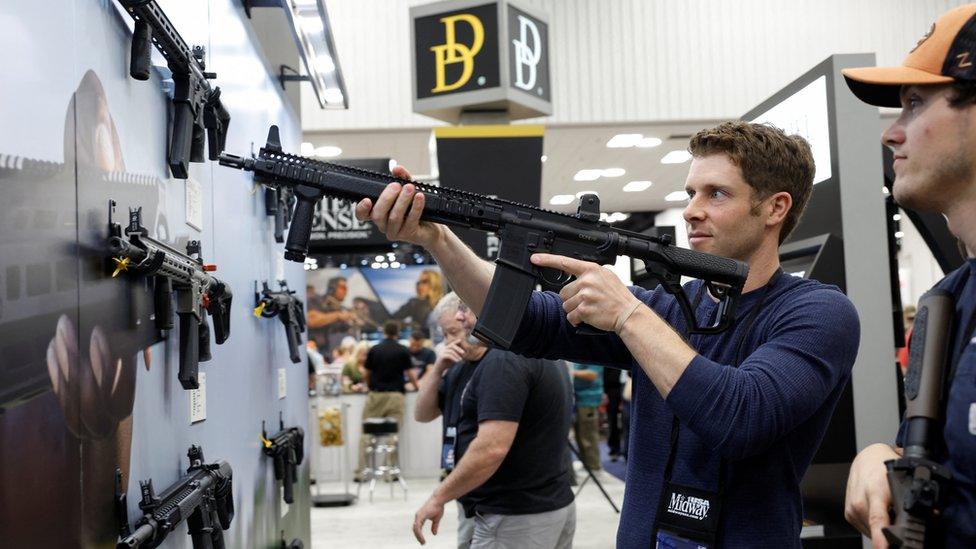What are bump stocks? US Supreme Court lifts Trump-era ban on gun attachments
- Published

Fitting a bump stock to a rifle lets it fire hundreds of bullets per minute - akin to a machine gun
The US Supreme Court has lifted a ban on bump stocks, the rapid-fire gun accessory used in America's deadliest mass shooting.
Bump-stocks, or slide fire adapters, allow semi-automatic rifles to fire hundreds of bullets per minute, similar to a machine gun.
But the court said it did not meet the government's definition for machine guns, which are mostly mostly illegal under federal law - with some exceptions.
The Trump administration banned the devices by classifying them as machine guns after they were used to kill nearly 60 people at a Las Vegas concert.
What are bump stocks?
The bump stock is a device added to the butt of a rifle that harnesses the gun's recoil or the backward movement felt by a person when the bullet is fired.
It replaces the weapon's stock, which is held against the shoulder, and allows the rest of the rifle to slide back and forward with every shot despite having no mechanical parts or springs.
The motion makes the trigger collide with, or bump, the shooter's finger as long as they apply forward pressure with the non-shooting hand and rearward pressure with the shooting hand.
It is estimated that a semi-automatic rifle outfitted with a bump stock can fire between 400-800 bullets per minute, comparable to machine guns.
Why were they banned?
In 2017, a gunman who killed 60 people at a concert in Las Vegas had added the accessory onto 12 of his semi-automatic rifles.
Outcries for stricter gun control measures came from politicians and victims' families in the event's aftermath.
Another mass shooting at a high school in Parkland, Florida, a year later, added to calls for reform.
In 2018, then-President Donald Trump moved to classify guns with bump stocks as machine guns, allowing them to be banned under federal law.
What did the Supreme Court say?
In its ruling, the court said the government did not have the right to ban bump stocks.
The court said a semi-automatic rifle with an attachment does not qualify as a machine gun under federal law, adding that the Bureau of Alcohol Tobacco and Firearms had "exceeded" its authority by banning the device.
The Supreme Court's opinion, written by conservative Justice Clarence Thomas, pointed to the technical differences between a machine gun and a gun equipped with a bump stock.
Quoting part of the legal definition of machine guns, the court said rifles with a bump stock "cannot fire more than one shot 'by a single function of the trigger', and even if they could, they would not do so 'automatically'".
But the decision was split, with three of the nine justices - Ketanji Brown Jackson, Elena Kagan and Sonia Sotomayor - dissenting.
In her dissent, Justice Sotomayor warned that the decision to put "bump stocks back into civilian hands" will have "deadly consequences".
Related topics
- Published13 April 2023
- Published4 October 2017

- Published19 December 2018

- Published15 April 2023
